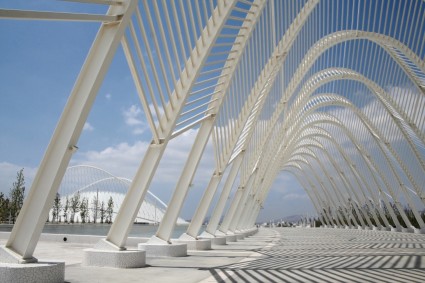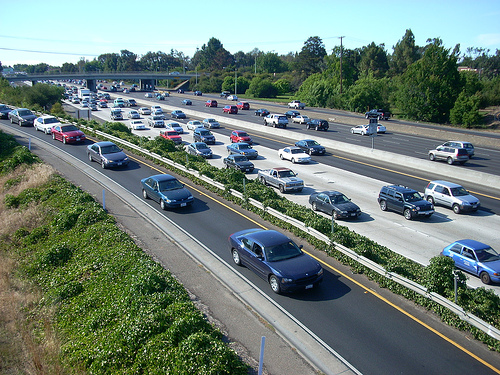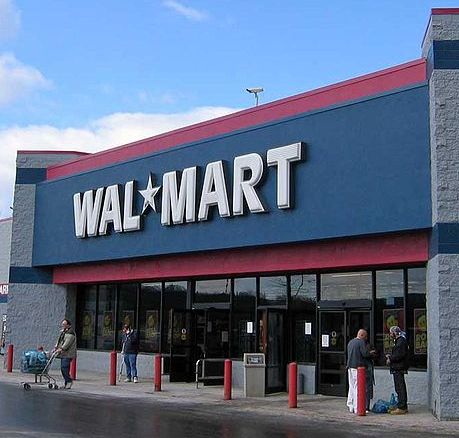Climate Cities
All Stories
-
Obama’s absurd Olympic boosterism
Arches, now deserted, built for the 2004 Athens Olympics. As healthcare reform shipwrecks and climate legislation lurches toward a similar fate, President Obama is … preparing to jet to Copenhagen to shill for Chicago as 2016 Olympic site? Really? What an absurd and ignoble use of time and prestige. When I think of the Olympics, […]
-
Stockton Williams on urban retrofits, Obama, and the sexiness of caulking guns
This is part of a series of interviews with people working to make U.S. communities smarter, greener spaces. Got a suggestion for an interviewee? Send it our way or leave it in the comments section below. Earlier this year, officials from sixteen U.S. cities gathered in Cambridge, Mass., to compare notes on a surprisingly hot […]
-
MacArthur genius award winners include climate and ocean researchers
Some of the MacArthur Foundation “genius award” winners are doing work related to climate change. And they now they each have $500 grand, no strings attached. Neat-o: Climate scientist Peter Huybers mines “a wealth of often-conflicting experimental observations to develop compelling theories that explain global climate change over time.” Biogeochemist Daniel Sigman unravels “the interrelated […]
-
The social life of traffic
This article is part of a collaboration with Planetizen, the web’s leading resource for the urban planning, design, and development community. Traffic is essentially “an engineering issue,” says author Tom Vanderbilt. “But there’s also a layer of culture.” That layer of culture determines, to a large extent, how traffic can become a problem. This idea […]
-
Will a greener White House complex mean a more productive president?
Arrrrr ye gettin’ more done now?Official White House photostream via flickr[UPDATE: A White House spokesperson called me to clarify that it’s parts of the White House complex, not the White House itself, that will be seeking LEED certification. Like many others in the blogosphere, I got swept up in the excitement of imagining hemp sheets […]
-
Wal-Mart’s history of destroying sacred sites
A re-consecration ceremony was held this past weekend at a damaged Indian mound in Oxford, Ala. As we reported last month, the 1,500-year-old sacred and archaeologically significant site was partially demolished during a taxpayer-funded economic development project, with the excavated dirt to be used as fill for construction of a Sam’s Club, a retail warehouse […]
-
Blood, sweat, and vision: The JP Green House in its ugly duckling phase
Innovation in progress. Excuse our dust. For more images from the JP Green House, visit Leise Jones Photography.I was bringing two new friends down the street for a tour of the JP Green House last week. “Now prepare yourselves,” I warned, as I always do, “it’s not bright shiny green yet. You’ll need to use […]
-
Portland’s newest high-rise has wind turbines on the roof
The cermonial urban-turbine installation.indigo12west.comTwo weeks ago in Portland, Oregon, a new 23-story building added something you don’t usually see in an urban setting: a series of four Skystream wind turbines, with a total capacity of 9.6kW. There are several reasons why wind turbines are a rarity atop highrises — beyond the obvious one: our power […]
-
Alabama city backing away from destruction of ancient Indian mound?
Following local protests and international outcry, the city of Oxford, Ala. appears to be backing away from plans to destroy an ancient and archaeologically significant Indian mound in order to use the dirt as fill for a new Sam’s Club, a retail warehouse store operated by Wal-Mart. A local landowner says his property will now […]
-
Competition dreams up new ways to harass suburbanites
Dwell magazine and Inhabitat have teamed up to sponsor a “Reburbia” competition in which designers re-envision suburbia in ways that make environmentalists seem as scary and dingbatty as possible. The finalists include a lot of inspiring ideas, but my favorite by far is the proposal to have menacing 3,000-foot-tall robots stomp into suburban villages, rip […]






